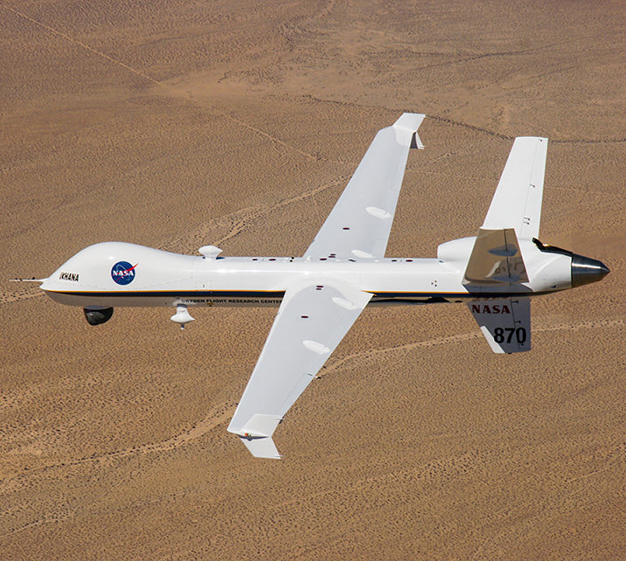NASA, along with the US Federal Aviation Administration (FAA), and other industry partners (General Atomics, Honeywell International) have begun trials designed to enable unmanned aircraft to fly routine operations in national airspace. The first part of the trials utilize a C90 King Air to be an “intruder” in a UAV’s (unmanned aerial vehicle) flight path.
“Our team is working toward solving our common goal of overcoming the challenges of integrating UAS into the National Airspace System; a topic that has increasingly proved its relevance as several industries across the country identify the need to fly UAS.” UAS-NAS project manager Laurie Grindle said of the project’s initial flight tests, held last June. “Completing these recent flight tests has brought us one more step toward accomplishing that goal.”
The focus of the flights is to evaluate automatic collision avoidance capability of autonomous aircraft and will run through July at NASA’s Armstrong Flight Research Center in California. They are being held as a part of the agency’s Unmanned Aircraft Systems Integration in the National Airspace System (UAS-NAS) project.

Start date was June 17, when the project team completed 14 encounters using an Ikhana aircraft equipped with an updated sense-and-avoid system and a Honeywell-owned Beech C90 King Air acting as the intruder. The following day, a second test was flown with a total of 23 encounters. 200 encounters are planned throughout stage one of the test series.
NASA said: “Both tests will use other aircraft following scripted flight paths to intrude on the flight path the autonomous craft is flying, prompting it to either issue an alert or maneuver out of the other aircraft’s path.”
This is the third series of tests that NASA has run demonstrating the proof-of-concept sense-and-avoid system. Core air traffic infrastructure and supporting software components are engaged through a live and virtual environment to demonstrate how autonomous aircraft interact with air traffic controllers as well as other air traffic.
Armstrong Flight Research Center UAS-NAS deputy project manager Heather Maliska said: “Our researchers and project engineers will be gathering a substantial amount of data to validate their pilot manoeuvre guidance and alerting logic that has previously been evaluated in simulation.”
NASA’s plan is to begin the second phase of the test series in August. A T-34 aircraft equipped with a proof-of-concept control and non-payload communications system will be used.
Banner top image taken by Josh Kaiser Photography

